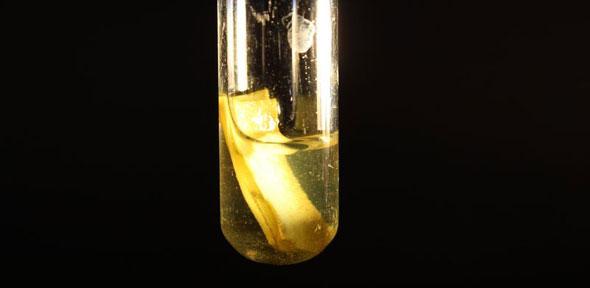Hydrogen would be a nearly perfect fuel if it didn’t take more energy to extract it than you can get out of it. Scientists have been working for years to isolate it in an economical fashion. The most common element in the universe, hydrogen makes up 10 percent of the weight of living things here on earth – mainly in water, proteins and fats. Its bonds in water make it pervasive, but still distant. Obtaining it can be as simple as the video below. But the short bursts derived from this approach will exhaust the battery and not provide as much energy in return.
Waste Not, Want Not
Ironically, much of the earth’s other resources, more easily gained, are wasted in our society’s rush to consume. Recent reports show that up to a third of the food produced today goes to waste. Huge quantities of biomass could seemingly be put to good use rather than adding to the methane that threatens to speed up global warming. The University of Cambridge points out, “As natural resources decline in abundance, using waste for energy is becoming more pressing for both governments and business.”
Scientists there have shown that sunlight at ambient temperatures can produce hydrogen gas from just about any biomass source as long as it’s loaded with lignocellulose, a major component of plants and trees. Dr Moritz Kuehnel, from the Department of Chemistry at the University of Cambridge, explains the difficulty in working with it.
“Lignocellulose is nature’s equivalent to armored concrete. It consists of strong, highly crystalline cellulose fibers that are interwoven with lignin and hemicellulose which act as a glue. This rigid structure has evolved to give plants and trees mechanical stability and protect them from degradation, and makes chemical utilization of lignocellulose so challenging.”
We usually obtain energy from such products by burning them, but the need to get clean hydrogen fuel from such sources usually involves high temperatures and pre-processing to break down the materials’ rigid walls. Cambridge researchers found ways around that.
An Ideal Solution?
In their “simple photocatalytic conversion process,” they add catalytic nanoparticles to a container of alkaline water in which the biomass is suspended. Researchers then place the container in front of a light in the lab which mimics solar light. They report, “The solution is ideal for absorbing this light and converting the biomass into gaseous hydrogen which can then be collected from the headspace. The hydrogen is free of fuel-cell inhibitors, such as carbon monoxide, which allows it to be used for power.”

Leaf in Cambridge solution exposed to sunlight gives off hydrogen. How much?
Absorbing solar light, the nanoparticle absorbs energy and uses it “to undertake complex chemical reactions,” rearranging the atoms in the water and biomass to form hydrogen fuel and other organic chemicals, such as formic acid and carbonate.
Dr David Wakerley, also of the Department of Chemistry, says: “There’s a lot of chemical energy stored in raw biomass, but it’s unrefined, so you can’t expect it to work in complicated machinery, such as a car engine. Our system is able to convert the long, messy structures that make up biomass into hydrogen gas, which is much more useful. We have specifically designed a combination of catalyst and solution that allows this transformation to occur using sunlight as a source of energy. With this in place we can simply add organic matter to the system and then, provided it’s a sunny day, produce hydrogen fuel.”
The head of the Christian Doppler Laboratory for Sustainable SynGas Chemistry at the University of Cambridge, Dr. Erwin Reisner, adds: “Our sunlight-powered technology is exciting as it enables the production of clean hydrogen from unprocessed biomass under ambient conditions. We see it as a new and viable alternative to high temperature gasification and other renewable means of hydrogen production.
Future development can be envisioned at any scale, from small scale devices for off-grid applications to industrial-scale plants, and we are currently exploring a range of potential commercial options.”
Although only test tube-sized now, the potential applications could be a future source of clean energy. We’ll have to see whether larger size systems provide usable hydrogen in as economic a fashion as the researchers predict.
You can review the team’s research, which was published online on March 13 in the journal Nature Energy.

